Incubating your own quail eggs is an exciting process, especially when doing it for the first time. Egg candling is a part of that process, which helps you improve your success rate of hatching. But what is candling? When should you do it? And what should you do with the information?
Quail egg candling is the act of shining a bright light through the egg during the incubation process to determine which egg is fertile and which isn’t before eggs move into lockdown on day 14. Only fertile eggs should be placed in the incubator for lockdown to improve hatch rate and reduce the chances of a rotten egg contaminating the rest.
How to candle quail eggs
You only need two things to candle a quail egg beside the egg itself:
- A dark room
- A bright light source
The dark room allows your eyes to see how the light spreads in the egg. I tried to do it in dim light, but I found it much harder to see what was happening inside the egg. If the room is pitch dark, everything is much easier.
Learn how to raise your own quail and have an unlimited supply of eggs and meat.
You can use a number of candling devices, but the main thing is that they need to emit very bright light because quail egg shells are thicker than most other eggs. The IncuBright is probably the most popular egg candler available. It’s very cheap and available on Amazon here.
Take the egg, and palce the flashlight directly to its rounded end. If there is any light leakage, cover the hole with your hands.
It’s important to handle the eggs with clean hands. Introducing dirt and bacteria to the eggshell can lead to some of the quail not hatching or dying shortly after.

If you use the same incubator for the turning and the lockdown periods, remove the entire tray from the incubator. Take one egg at a time, candle it, and place it in the incubator if it is fertile, or discard it if it is infertile.
How to tell if a quail egg is fertile, infertile, or a quitter
Telling the difference between fertile and infertile quail eggs on day 14 is easy.
If the entire egg glows like a lightbulb, it’s an infertile egg and shouldn’t be placed back in the incubator. These eggs aren’t fit for consumption anymore but should be discarded.
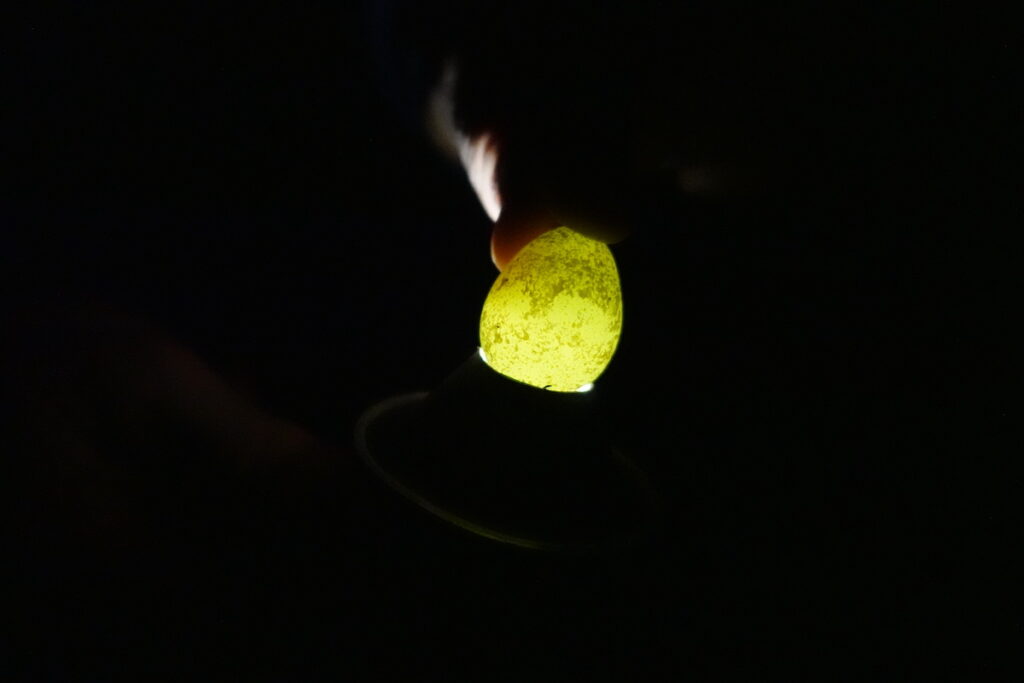
If a bubble on the bottom of the egg glows but the majority of the egg remains dark, it’s a fertile egg with an embryo developing inside. Here’s a picture I took of a fertile egg; it shows the air bubble at the bottom, but the rest of the egg is dark.
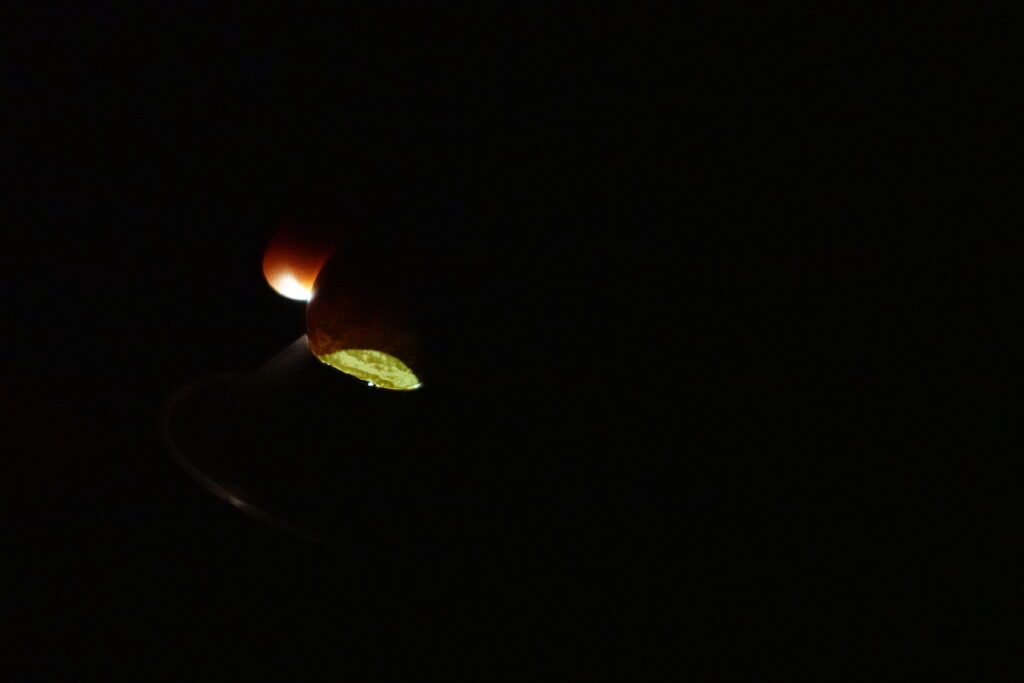
If the translucent bubble of the egg is large and the dark part is small, it means that the embryo has stopped developing at some point. These are called quitter eggs. It takes some practice to get this right, so as a beginner, and in some cases the development stops so late that you can’t tell the difference by candling the egg.
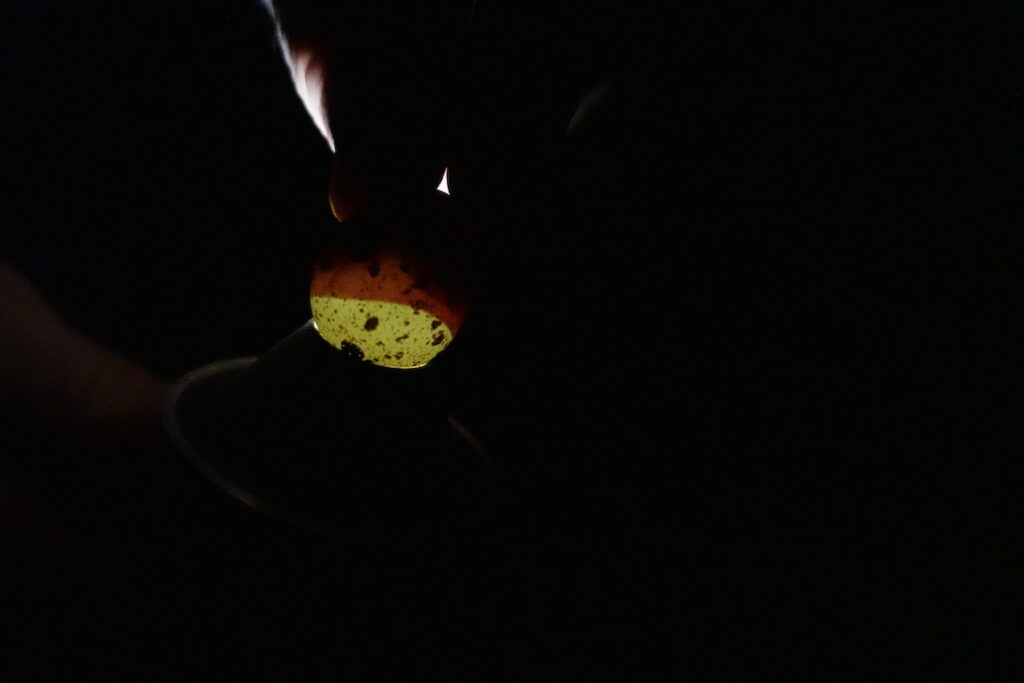
Here is an example of a quitter egg that stopped developing at around 14-15 days, and would have been impossible to identify in candling.
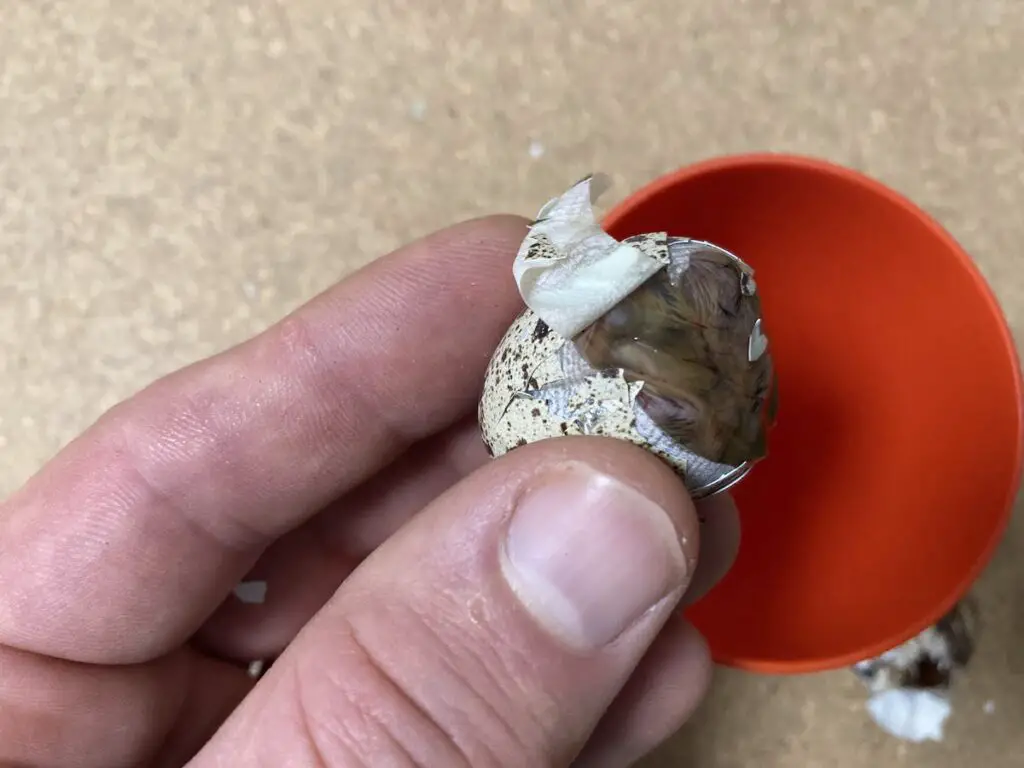
Here’s an example of another quitter egg that I suspected would be one, but I kept it in the incubator anyway. What gave me the impression was the disproportionately large size of the bubble at the time of candling.
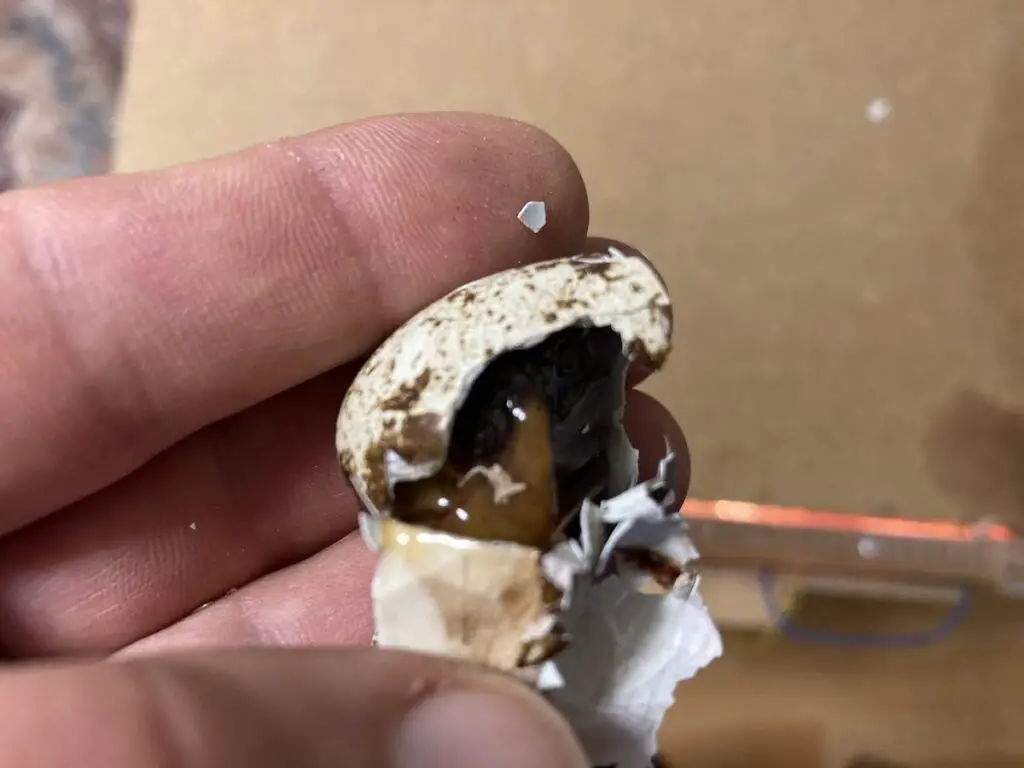
Fertile eggs with cracks may be able to hatch. If the dark spot of the egg is large enough, it probably means that the embryo is still in development. At the first incubation, I thought that the crack probably meant that the quail inside was dead, but when I opened the shell, it was, in fact, alive.
Why and when to candle quail eggs
The reason to candle quail eggs during incubation is to decide which ones are fertile and which ones are not. Experienced quail breeders can also determine quitter eggs, which are those eggs that, for some reason, stopped developing at a particular stage.
Candling quail eggs before lockdown is important because infertile eggs can explode in the last few days when you raise the humidity level. Increased humidity causes the eggshell to be softer, and therefore, the infertile egg is more likely to burst and compromise viable eggs in the brooder.
Quail eggs should be candled on the 14th day of incubation when they are ready to move into lockdown. You can candle them several times even before to see the various stages of development, but if you do it too often, you may compromise your hatch rate.
Each time you want to see inside the egg, remove it from the incubator for as short as possible and keep the environment as warm and draft-free as possible.
It’s possible to incubate quail without candling the eggs at all, and you can still get a good hatch rate, but it’s more prudent to mitigate the risk by double-checking them before they go into lockdown.
It’s a small time investment that gives you feedback on your incubating process.
A quail egg fertility rate of 80% at the time of candling is quite common, and 90%+ is quite outstanding, especially if you’re a first-time brooder.
If your egg fertility rate is very poor (less than 50%), you should try to find out what may cause it.
For example, if none of your eggs develop, you may have a problem with your birds that lay the eggs or the rooster (remember that you will only get fertile eggs if there is a quail rooster with the hens). If the hens lay healthy, fertile eggs, you may also identify a problem with your incubator (lid not closing properly, inconsistent temperature etc).
After candling
You can expect your baby quail to hatch within 3-4 days of being placed in lockdown. If you haven’t prepared the brooder yet, this is the time to do so.
In this other article you can read about how to care for your baby quail in the first days after hatching.
If you’re still before the incubation process, you can read this article I wrote about improving your hatch rate when incubating your own quail eggs.
Happy hatching!

